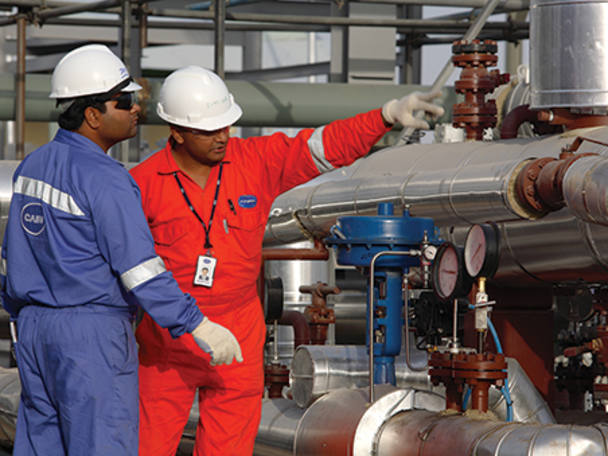Geopolitical events and price volatility, not to mention operational complexity, mean you should never call a commodity stock 'low risk'. That's even more true of companies in an oil sector that is not only adjusting to a world with two swing producers, but to greater climate-related sanctions in the years ahead. But to the extent that 'low risk' can be found among any of London's listed oil groups, Cairn Energy (CNE) is a strong candidate. With both cash and lowly valued, low-cost reserves on its balance sheet, the company should benefit from any further rise in oil prices, which we think is more likely than not in the year ahead. Throw in looming production from its stakes in Catcher and Kraken in the North Sea, and we think 2017 should be the year where Cairn's shares finally push beyond their narrow recent trading range.
- Improved oil price
- Cash-rich balance sheet
- Low-cost production
- Potential favourable tax case
- Counterparty and execution risks
- No yield
Cairn's timing has been good. Unlike many of its peers, the FTSE 250 constituent did not spend the great price slump of 2014 to 2016 selling oil at unprofitable prices, booking massive impairments and taking on debt - a history reflected in a share price that has outperformed the sector. While others have been retrenching, cutting and scrambling to protect dividends, Cairn has been busy building its asset base from 30m barrels (mmboe) of booked 2P (proven and probable) reserves at the end of 2013 to a best-estimate gross contingent (2C) resource of 473mmboe as of August 2016. Crucially, that figure omits a further 2.7bn of "associated 2C oil in place" the company believes sits in the twin discoveries it made off the coast of Senegal in 2014.
Plus, there's good reason to believe the 473m figure, which relates to the Sangomar Deep (or 'SNE') discovery, is somewhat conservative. In acquiring ConocoPhillips' 35 per cent working interest in the SNE field for $350m (£268m) in October, Australian explorer Woodside estimated that SNE contains 560m barrels of recoverable oil. So Cairn's figure - based on an independent report by consultant ERC Equipoise - leaves room for upgrades, which could be further boosted by a third phase drilling programme, which the Edinburgh-headquartered company believes can add a further 500m barrels of gross risked resources.
Future appraisal drilling in Sangomar Deep – in which Cairn holds a 40 per cent working interest – is expected to eat up an additional $80m of capital expenditure. That, together with the $315m earmarked for the last stretch development of the Kraken and Catcher fields, should wear away most of the $414m net cash Cairn had at the end of June. But an undrawn reserve-based lending bank facility of up to $260m, with additional letters of credit of $175m, provide a backstop until Kraken and Catcher start to generate free cash flow by the end of the year.
The first source of long-awaited revenue should come from Kraken early next year, $300m under budget, ahead of schedule and boosted by the February acquisition of an additional 4.5 per cent interest in the development, following the collapse of joint-venture partner First Oil. The field should last 25 years and is expected to break even at just $14 per barrel at peak flow, 15,000 barrels a day of which will accrue to Cairn. Production from Catcher, due in the second half of 2017, is expected to break even at $20 per barrel and has been further de-risked by supportive revisions to lead operator Premier Oil's (PMO) financial covenants.
One potential fillip to Cairn's cash position - and the share price - is the settlement of a dispute with Indian tax authorities. India's revenue has claimed it is owed $477m, and blocked Cairn's disposal of the residual 10 per cent stake it holds in Cairn India, the division the company sold to Vedanta Resources for $6.5bn in 2011. Cairn has a "high level of confidence" it can claim compensation of $1.1bn plus costs in the matter, which has reached international arbitration under the UK-India Investment Treaty. This dispute is scheduled to be heard this year, and because the shares do not currently price in a win, investors could receive further upside.
CAIRN ENERGY (CNE) | ||||
|---|---|---|---|---|
| ORD PRICE: | 220p | MARKET VALUE: | £1.27bn | |
| TOUCH: | 219.8-220.1p | 12-MONTH HIGH: | 233p | LOW: 125p |
| FORWARD DIVIDEND YIELD: | NIL | FORWARD PE RATIO: | NA | |
| NET ASSET VALUE: | 349¢* | NET CASH: | $414m | |
| Year to 31 Dec | Turnover ($m) | Pre-tax profit ($bn) | Earnings per share (¢) | Dividend per share (¢) |
|---|---|---|---|---|
| 2013 | nil | -1.10 | -93.2 | nil |
| 2014 | nil | -0.56 | -65.0 | nil |
| 2015 | nil | -0.50 | -89.0 | nil |
| 2016** | nil | -0.13 | -15.0 | nil |
| 2017** | 251 | -0.08 | -15.0 | nil |
| % change | - | - | - | - |
Normal market size: 10,000 Matched bargain trading Beta: 1.12 **Includes intangible assets of $624m, or 108¢ a share *JPMorgan forecasts £1 = $1.27 | ||||










